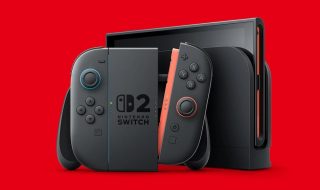Nintendo’s latest financial report has once again proven the company’s unmatched dominance in the console market. As of September 30, 2025, the Nintendo Switch 2 has sold 10.36 million units worldwide, while the original Nintendo Switch has reached a staggering 154.01 million units in lifetime sales. This is a big milestone for the company, and it also defines where the company is headed next.
Selling over 10 million units in less than a year is no small feat. The Switch 2 launched amid skepticism about whether Nintendo could replicate the hybrid magic of the original. Yet, the numbers prove otherwise. In the three months leading up to September 30, Nintendo sold 4.54 million Switch 2 consoles and 11.95 million software units. It shows a strong demand for both hardware and first-party titles.
Nintendo has even raised its annual forecast and projected 19 million units of Switch 2 hardware and 48 million software units by the end of the fiscal year. This is a confident move that reflects growing consumer interest and supply chain stability.
Even after eight years, the original Switch remains a powerhouse. Nintendo sold 0.91 million Switch consoles and 37.16 million software units in the same quarter. With 1.45 billion total software sales, it is clear that the Switch ecosystem still has a massive active user base. The company’s decision to revise its software forecast upward to 125 million units for this fiscal year shows that gamers continue to buy games for their aging but beloved console.
On Switch 2, Mario Kart World leads with 9.57 million copies sold, followed by Donkey Kong Bananza with 3.49 million. These early titles are already showing the same momentum seen in the early days of the original Switch, where strong first-party exclusives helped sustain years of growth.
On the original Switch, the numbers are still really good. Mario Kart 8 Deluxe has sold 69.56 million copies, while Animal Crossing: New Horizons stands at 48.62 million. Even older titles like Super Mario Odyssey and The Legend of Zelda: Breath of the Wild continue to sell. It shows how Nintendo’s evergreen lineup keeps generating revenue long after release.
With these figures, Nintendo finds itself in a unique position. The company now manages two active platforms that are performing well simultaneously. It’s a rare incident in the console industry. Historically, console transitions come with steep drop-offs in older hardware sales, but Nintendo’s hybrid model allows for gradual migration.
Industry analysts believe this approach could help Nintendo avoid the traditional mid-cycle dip seen with competitors like Sony and Microsoft. The ongoing popularity of the Switch lineup ensures a large install base for developers, while the Switch 2’s improved performance and hybrid form factor keep the innovation narrative alive.
Now the big question is: Can the Switch 2 Surpass Its Predecessor?
It is too early to predict whether the Switch 2 will surpass the sales of the original, but its early trajectory is promising. If it maintains its current pace and continues to receive blockbuster exclusives, it could reach 50 million units within two years, a figure that would place it among Nintendo’s most successful consoles.
However, Nintendo’s biggest challenge will be maintaining momentum once early adopters are satisfied. Continued third-party support, fresh hardware bundles, and backward compatibility will play major roles in sustaining sales. The upcoming holiday season and major titles like the next Zelda and Metroid releases will likely determine how fast Switch 2 sales accelerate in 2026.
Nintendo’s hybrid vision is doing great for the company. The original Switch may be approaching the end of its life cycle, but it remains a revenue-generating machine. Meanwhile, the Switch 2 has launched strongly, signaling a smooth generational handoff that many companies fail to achieve. If this trends continue, 2025 could mark the start of Nintendo’s most stable console era ever.












